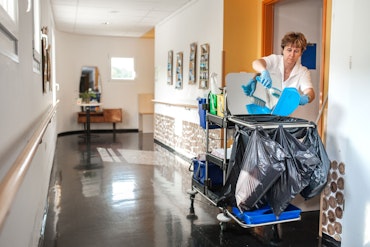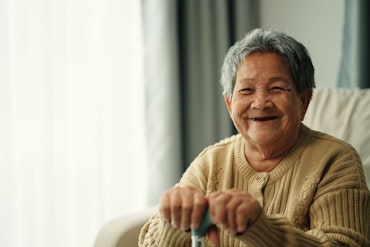Experts pose bold aged care strategy to help Australia’s outback
Some aged care facilities in regional areas are only reaching 50 percent capacity, causing concern in healthcare experts
![<p>Experts have provided insight of ways that rural aged care could be improved for older Australians. [Source: Shutterstock]</p>](https://agedcareguide-assets.imgix.net/news/articles/wp/calmagedcare0608.jpg?fm=pjpg&format=auto&w=550&q=65)
Experts have provided insight of ways that rural aged care could be improved for older Australians. [Source: Shutterstock]
Key points:
- Some rural residential homes are operating at less than 50 percent capacity because of aged care worker shortages
- In rural areas, factors that can increase costs compared to metropolitan areas include travel distances, higher operating costs and workforce shortages
- Researchers suggest that increasing rural healthcare placements for university students could later fill roles in rural areas
Healthcare experts have voiced concerns about the workforce shortages in rural healthcare and highlighted ways to ensure that older Australians get the care they need.
Around 370,000 aged care workers in Australia are employed in direct and indirect roles. However, current estimates suggest that 212,000 full-time worker roles in the aged care industry will be vacant by 2050.
Due to staffing shortages, Australian researchers found that some ‘residential facilities in regional areas [are] operating at just 50 percent capacity.’
Marylouise Freeman, a registered nurse, has spent more than 25 years working in aged care, disability and community settings and explained why students on healthcare placements should consider rural areas more often.
“[Students] need to know [that providing rural care] doesn’t have to be permanent — it’s all about opening doors and keeping them open,” she said.
However, healthcare students travelling to rural areas to complete university must consider multiple factors, including limited access to public transport, the financial impact of living away from home and finding accommodation in rural areas.
Approximately 3,614 medical students graduated from Australian universities last year, with 27 percent of domestic medical students being from rural areas.
Researchers from the University of Notre Dame Australia found that ‘30 percent of general practitioners — a specialty that gives doctors the opportunity to do most of their training in rural areas — were practising in the country 10 years into their careers.’
Ten percent of specialists — most of whom complete training in metropolitan areas — were practising in rural areas after ten years.
Ms Freeman also commented that taking a step back and analysing how healthcare professionals can better help older Australians in rural areas could make a positive impact.
“There’s a lot of research on the challenges of rural care but less on the solutions,” she said.
“We have to work collaboratively with these communities to understand their needs — rural communities are very resourceful and if we understand what they need, we can distribute resources more effectively.”
Approximately 34 percent of older Australians live in remote and rural areas.
Some barriers that prevent older Australians from accessing appropriate care may include having insufficient healthcare options, a lack of specialist care and associated transport concerns according to a report from the Care Side.
Director of the Care Economy Research Institute at La Trobe University, Professor Irene Blackberry understood that while rural care is not perfect, previous media coverage could have affected the workforce.
“There’s a stigma that care providers who go to rural areas are moving backwards in their career trajectory, but that’s not true,” she said.
“We have to challenge that stereotyping — it’s all about how you want to grow your career, and for much of the workforce, there is a lot of opportunity [in rural and remote communities].”
In rural areas, factors that can increase costs compared to metropolitan areas include travel distances, higher operating costs and workforce shortages.
While more university students are being encouraged to complete their healthcare placements in rural areas, improving digital access to healthcare could also improve aged care for older Australians.
Professor Blackberry commented on the importance of ensuring that rural Australians can use the technology available to them so that they can engage in telehealth when required.
“Technology is good, but we still need models of care around the technology [in rural areas] — and we need to make sure what’s being offered is user-friendly,” she said.
Unless changes are made to rural healthcare and the staffing shortages are addressed, many aged care facilities are at risk of closure.
Up to 75 percent of aged care facilities are expected to lose money unless the Australian Government creates a funding reform, with inner regional and outer regional facilities most at risk, as per the recent StewartBrown Advisory report.
StewartBrown Advisory is the ‘largest financial benchmark in the aged care sector’ and provides data compiled from more than 1,200 residential care homes, 210 approved provider organisations and 68,200 Home Care Packages.
Read more about the impact of recently released aged care data on rural areas: StewartBrown Advisory releases new aged care data impacting rural Aussies.
How do you think aged care could be improved in rural and remote areas of Australia?
Let the team at Talking Aged Care know on social media.
For more information and news in the aged care industry, subscribe to our free newsletter.
Relevant content:
Aged Care Employee Day celebrates the efforts of over 370,000 Aussies
StewartBrown Advisory releases new aged care data impacting rural Aussies
Upcoming 3G network closure may affect your access to emergency services























